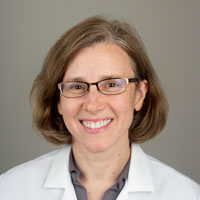Jan
11
Welcome to the Society for Education in Anesthesia (SEA) website! 2020. Certainly an interesting time to take on the role of president of the Society for Education in Anesthesia
 |
|
Stephanie B. Jones, MD
SEA President
|
Reinvention emerged as a focus of our 2018 strategic planning session, led by Dr. Karen Souter, immediate past president. The plan developed that evening in San Francisco centered on improving our meetings with inspirational speakers and innovative presentation formats, collaborating with other groups, and supporting our committee structure and emerging leaders. To enact this ambitious plan, we would use the considerable expertise and talent that exists within our ranks to provide value for members. Much was accomplished over the following two years, and when the pandemic forced rethinking of our traditional in-person educational meetings and committee work structure, it simply accelerated the process.
The December 2020 strategic planning session, held virtually, manifested this acceleration. This meeting was notable for engaged discussion and energetic deliberation. The meeting started with a quick roundtable SWOT analysis (strengths, weaknesses, opportunities, threats). Interestingly, the close-knit nature of the SEA community was identified as both a strength and weakness. Those outside or new to the organization might perceive the welcoming familiarity at annual meetings to be insular. The necessary shift to a sustained virtual platform has created opportunity for improving inclusivity. The virtual Fall Meeting 2020 and preceding online workshops were a strong initial success, creating a platform of experience on which to build further. We recognize that we cannot entirely return to our previous baseline.
The stage was thus set for the three breakout groups. The main topic of discussion for each group was derived from a request emailed to directors and committee chairs the week prior, asking them to propose one goal relevant to their committee's mission and another relevant to SEA's overall mission. Dr. Souter led the meetings group; Dr. Bryan Mahoney website and technology; and Dr. John Mitchell faculty development. Each group drafted an action plan while keeping SEA’s values—Collaboration, Innovation, Scholarship and an Inclusive Community—in mind.
The meetings discussion emphasized harnessing the online momentum by expanding our social media presence, exploring the logistic possibilities for hybrid meetings, and developing online offerings independent of our traditional semi-annual meeting calendar. The website/technology goals formed along similar lines – how to create and present website content that is available and useful to members and non-members. Finally, the faculty development discussion focused on how to train mentors and how to mentor in research, education, and professional societies.
One clear message emerged with an implication about openness and access: In order to most effectively and efficiently affect anesthesia education, our knowledge needs to be freely available. We can no longer rely on our traditional meetings and workshops as our primary source of income or cloister our content behind password protected firewalls. Our commerce, our coin of the anesthesia realm, is to develop our educators. To do so, we must create open content, foster innovation, and mentor the next generation of anesthesia education leaders. This is SEA’s role and what will set us apart from other anesthesiology organizations, allowing us to thrive in the new, post-pandemic, education world.
Share this post:


